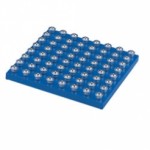Conveyor roller systems have been a mainstay with keeping the warehouse supplies and materials handling industry moving forward. The roller conveyor system is an intrical part of any distribution center. Employees don’t have to waste time transferring product from one area to the next. The extra added wear and tear on the body from lifting, packing, and transferring product from one station to the next is eliminated. Time is money and the quicker and more efficient way always pays off.

A key element of the conveyor system are ball transfer tables. When the conveyor sends a product into an intersection and the product requires manual sortment, rotation, or correctly positioned a ball transfer table is the piece that keeps things going in the right direction.
Prior to the ball transfer table thankfully coming into play most conveyor systems used an inverted caster system. The issue, however, with the inverted caster system is that the casters recognized paths because prior to a directional change the wheels had to align which made for some terrible problems for correct sorting.
The many uses for ball transfer tables include, but are not limited to;
- When two or more conveyor lines converge and items must be sorted.
- Product needs repositioned or adjusted for the next area.
- Items being sorted from one workstation and sent on to specific areas.
